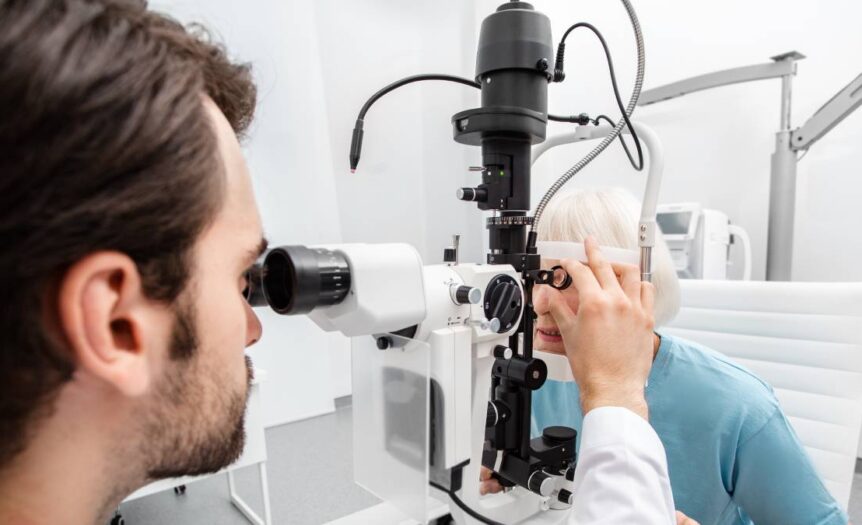Glaucoma can degrade a person’s vision without warning. That’s why you should share glaucoma prevention tips with your patients. These strategies will protect their eyesight and reinforce the value of proactive healthcare.
Regular Eye Exams Are Key
The first step in glaucoma prevention is getting regular eye exams. Many patients underestimate the importance of these check-ups, but they play a big role in catching glaucoma early. Whether or not you treat glaucoma in your practice, you should encourage patients to schedule dilated eye exams at least once every two years.
Yearly visits are even more important for people at a higher risk of developing this condition, such as those over 40 or anyone with a family history. Regular exams mean early detection, which can slow progression and preserve vision.
Maintain a Healthy Lifestyle
Next up is leading a healthy lifestyle. This isn’t just about eating nutritious foods and staying active, though both are good for overall wellness. Encourage your patients to incorporate a balanced diet rich in nutrients that support eye health, like leafy greens and omega-3 fatty acids. Regular exercise also helps to maintain well-being and can lower intraocular pressure, which is a key factor of glaucoma. Remind your patients that small, consistent changes can make a big difference over time.
Protect Your Eyes From UV Rays
Protecting the eyes from harmful UV rays is a straightforward yet overlooked prevention measure. Suggest wearing sunglasses with complete UVA and UVB protection when outdoors. Also, hats with brims can offer an extra layer of defense against the sun. Explain how these simple steps can help your patients shield their eyes from potential damage and lower the risk of developing glaucoma.
Be Mindful of Family History
Understanding family history can provide valuable insights into personal risk levels for glaucoma. Encourage your patients to learn about eye health issues in their family background, and discuss this information during their exams. Knowing about a hereditary predisposition can prompt earlier and more frequent screenings, giving you and your patient a head start in managing eye health.
These glaucoma prevention tips to share with your patients not only enhance their eye health but also strengthen your role as a trusted healthcare advisor. By instilling these habits, you’re helping patients take charge of their vision care. Encourage them to start today because when it comes to glaucoma, prevention truly is the best approach.










 Deering Estate
Deering Estate
 Massage Envy South Miami
Massage Envy South Miami
 Calla Blow Dry
Calla Blow Dry
 My Derma Clinic
My Derma Clinic
 Sushi Maki
Sushi Maki
 Sports Grill
Sports Grill
 The Healthy Kitchen
The Healthy Kitchen
 Golden Rule Seafood
Golden Rule Seafood
 Malanga Cuban Café
Malanga Cuban Café

 Kathleen Ballard
Kathleen Ballard
 Panter, Panter & Sampedro
Panter, Panter & Sampedro
 Vintage Liquors
Vintage Liquors
 The Dog from Ipanema
The Dog from Ipanema
 Rubinstein Family Chiropractic
Rubinstein Family Chiropractic
 Your Pet’s Best
Your Pet’s Best
 Indigo Republic
Indigo Republic




 ATR Luxury Homes
ATR Luxury Homes


 2112 Design Studio
2112 Design Studio
 Hamilton Fox & Company
Hamilton Fox & Company
 Creative Design Services
Creative Design Services
 Best Pest Professionals
Best Pest Professionals
 HD Tree Services
HD Tree Services
 Trinity Air Conditioning Company
Trinity Air Conditioning Company
 Cisca Construction & Development
Cisca Construction & Development
 Mosquito Joe
Mosquito Joe
 Cutler Bay Solar Solutions
Cutler Bay Solar Solutions


 Miami Royal Ballet & Dance
Miami Royal Ballet & Dance
 Christopher Columbus
Christopher Columbus
 Pineview Preschools
Pineview Preschools
 Westminster
Westminster
 Carrollton
Carrollton
 Lil’ Jungle
Lil’ Jungle
 Frost Science Museum
Frost Science Museum
 Palmer Trinity School
Palmer Trinity School
 South Florida Music
South Florida Music
 Pinecrest Orthodontics
Pinecrest Orthodontics
 Dr. Bob Pediatric Dentist
Dr. Bob Pediatric Dentist
 d.pediatrics
d.pediatrics
 South Miami Women’s Health
South Miami Women’s Health

 The Spot Barbershop
The Spot Barbershop
 My Derma Clinic
My Derma Clinic




 Miami Dance Project
Miami Dance Project

 Rubinstein Family Chiropractic
Rubinstein Family Chiropractic
 Indigo Republic
Indigo Republic

 Safes Universe
Safes Universe
 Vintage Liquors
Vintage Liquors
 Evenings Delight
Evenings Delight





 Atchana’s Homegrown Thai
Atchana’s Homegrown Thai
 Baptist Health South Florida
Baptist Health South Florida

 Laser Eye Center of Miami
Laser Eye Center of Miami
 Visiting Angels
Visiting Angels
 OpusCare of South Florida
OpusCare of South Florida

 Your Pet’s Best
Your Pet’s Best





 HD Tree Services
HD Tree Services
 Hamilton Fox & Company
Hamilton Fox & Company


 Creative Design Services
Creative Design Services